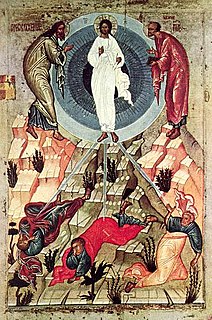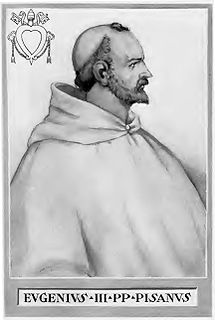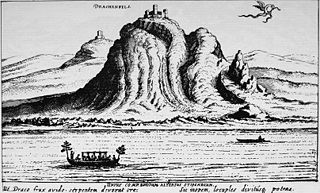
Bernard of Clairvaux, venerated as Saint Bernard, was a Burgundian abbot, and a major leader in the revitalization of Benedictine monasticism through the nascent Order of Cistercians.
Pope Anastasius IV, born Corrado Demetri della Suburra, was head of the Catholic Church and ruler of the Papal States from 8 July 1153 to his death. He is the last pope to take the name "Anastasius" upon his election.

Pope Honorius II, born Lamberto Scannabecchi, was head of the Catholic Church and ruler of the Papal States from 21 December 1124 to his death in 1130.
Pope Celestine II, born Guido di Castello, was head of the Catholic Church and ruler of the Papal States from 26 September 1143 to his death in 1144. He is the first pope mentioned in the prophecy of Saint Malachy.
Gregory VIII, born Alberto di Morra, was head of the Catholic Church and ruler of the Papal States for two months in 1187.

Pope Innocent II, born Gregorio Papareschi, was head of the Catholic Church and ruler of the Papal States from 14 February 1130 to his death in 1143. His election as pope was controversial and the first eight years of his reign were marked by a struggle for recognition against the supporters of Anacletus II. He reached an understanding with King Lothair III of Germany who supported him against Anacletus and whom he crowned as Holy Roman emperor. Innocent went on to preside over the Second Lateran council.
Pope Eugene III, born Bernardo Pignatelli, or possibly Paganelli, called Bernardo da Pisa, was head of the Catholic Church and ruler of the Papal States from 15 February 1145 to his death in 1153. He was the first Cistercian to become pope. In response to the fall of Edessa to the Muslims in 1144, Eugene proclaimed the Second Crusade. The crusade failed to recapture Edessa, which was the first of many failures by the Christians in the crusades to recapture lands won in the First Crusade. He was beatified in 1872 by Pope Pius IX.
Victor IV was an antipope for a short time in 1138.
Henry Murdac was abbot of Fountains Abbey and Archbishop of York in medieval England,
Eskil was a 12th-century Archbishop of Lund, in Skåne, Denmark.
Conrad of Urach was a Cistercian monk and abbot, and Cardinal Bishop of Porto and Santa Rufina; he declined the papacy.
Baldwin was a Cistercian monk and later Archbishop of Pisa, a correspondent of Bernard of Clairvaux, and a reformer of the Republic of Pisa. Throughout his episcopate, he greatly expanded the authority of his diocese, making it the most powerful institution in Liguria and Sardinia, and notably increased its landholdings.
Henry of Marcy (c. 1136 – 1 January 1189 was a Cistercian abbot first of Hautecombe and then of Clairvaux from 1177 until 1179. He was created Cardinal Bishop of Albano at the Third Lateran Council in 1179.
Theodwin was a German cardinal and papal legate of the 12th century.
Jordan was a Carthusian monk, created Cardinal Deacon by Pope Lucius II in December 1144 and then Cardinal Priest of Santa Susanna by Eugene III on 21 December 1145. He is often referred to as a member of the Roman family of the Orsini, but more recent research concludes that he was probably a Frenchman. He served as Camerlengo of the Holy Roman Church under Eugene III and subscribed the papal bulls between 9 January 1145 and 11 June 1154.
John of Toledo was an English Cistercian and Cardinal.

The 1119 papal election was, by an order of magnitude, the 12th century's smallest papal election that is currently considered legitimate by the Roman Catholic Church.
Guido de Summa was an Italian Cardinal.

The 1145 papal election followed the death of Pope Lucius II and resulted in the election of Pope Eugene III, the first pope of the Order of Cistercians.

Arnold I was Archbishop of Cologne from 1137 to 1151.
This page is based on this
Wikipedia article Text is available under the
CC BY-SA 4.0 license; additional terms may apply.
Images, videos and audio are available under their respective licenses.





